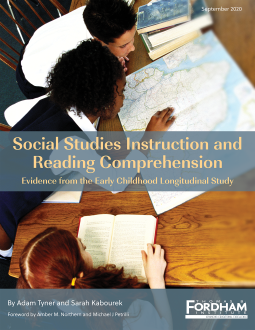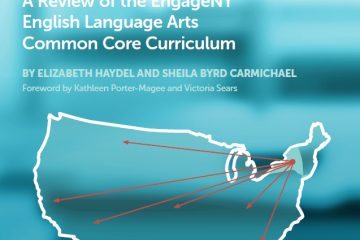Even as phonics battles rage in the realm of primary reading and with two-thirds of American fourth and eighth graders failing to read proficiently, another tussle has been with us for ages regarding how best to develop the vital elements of reading ability that go beyond decoding skills and phonemic awareness.
The dominant view is that the way to improve America’s abysmal elementary reading outcomes is for schools to spend more time on literacy instruction. Many schools provide a “literacy block” that can stretch to more than two hours per day, much of it allocated to efforts to develop reading skills such as “finding the main idea,” and “determining the author’s perspective.” But it doesn’t seem to be working.
Yet a small army of cognitive psychologists, analysts, and educators has long cast doubt on the view that reading is a discrete skill that can be mastered independently from acquiring knowledge. To these contrarians, a focus on academic content—not generalized reading skills and strategies—will equip students with the background knowledge they need to comprehend all sorts of texts and make them truly literate.
Bringing forward new evidence to this debate, Fordham’s associate director of research Adam Tyner and early childhood researcher Sarah Kabourek explore whether classroom time in the nation’s elementary schools is being put to the best use. They tap the massive trove of data in the federal Early Childhood Longitudinal Study, Kindergarten Class of 2010–11 (ECLS-K: 2011), which follows thousands of students in their kindergarten year through fifth grade. They examine how much classroom time is spent on different subjects, whether students who spend more time on certain subjects make greater progress in reading, and how these effects differ by student characteristics.
Their analysis reveals five key findings. Among them:
- Elementary school students in the U.S. spend much more time on ELA than on any other subject.
- Increased instructional time in social studies—but not in ELA—is associated with improved reading ability.
- The students who benefit the most from additional social studies time are girls and those from lower-income and/or non-English-speaking homes.
Though surely well intended, at the margin, spending extra time on teaching ELA may not yield much in the way of reading improvement. Instead, elementary schools should consider making more room for high-quality instruction in history, civics, geography, and the other knowledge-rich—and engaging—subjects that comprise social studies. Our youngest generation of readers will be all the stronger for it.





